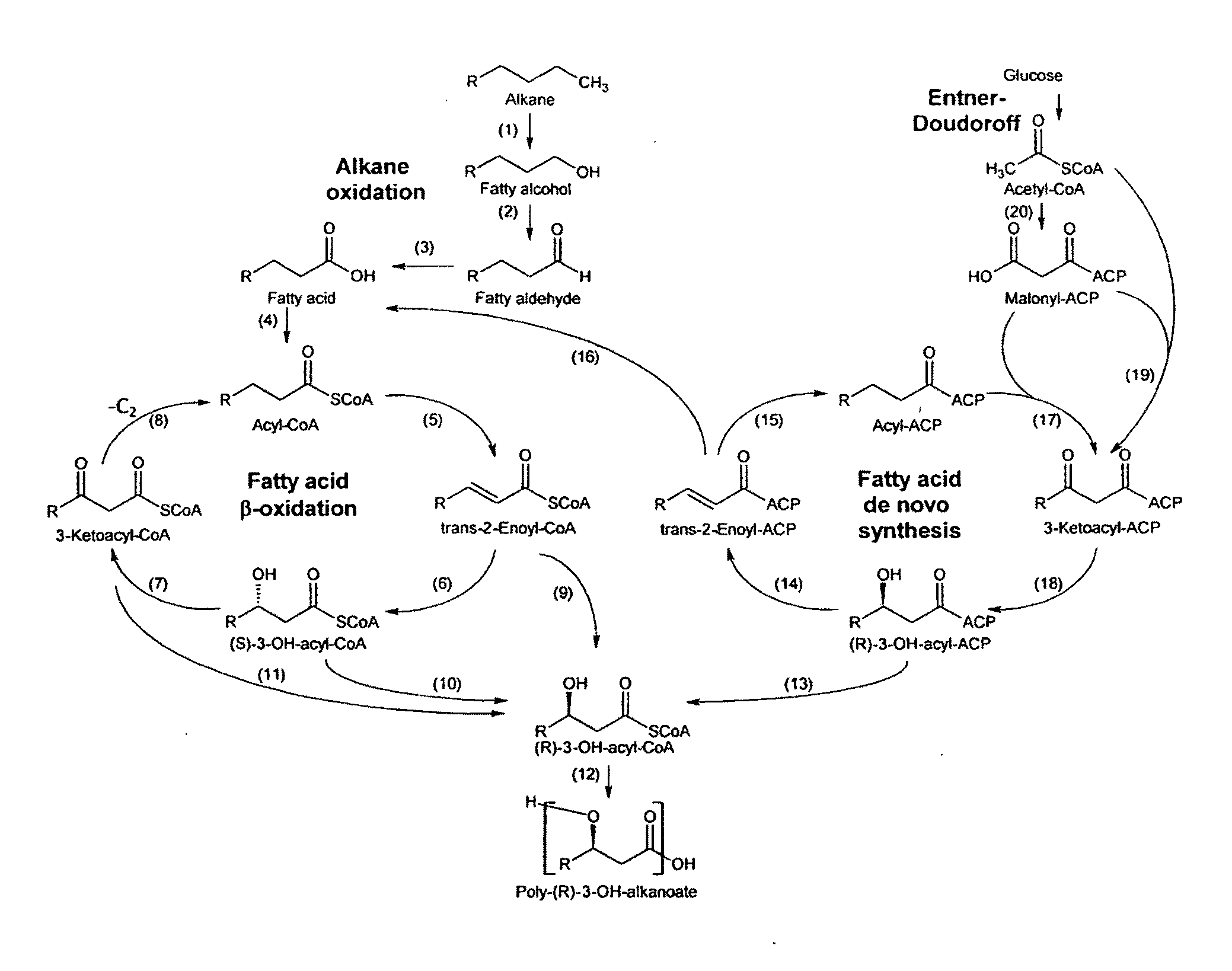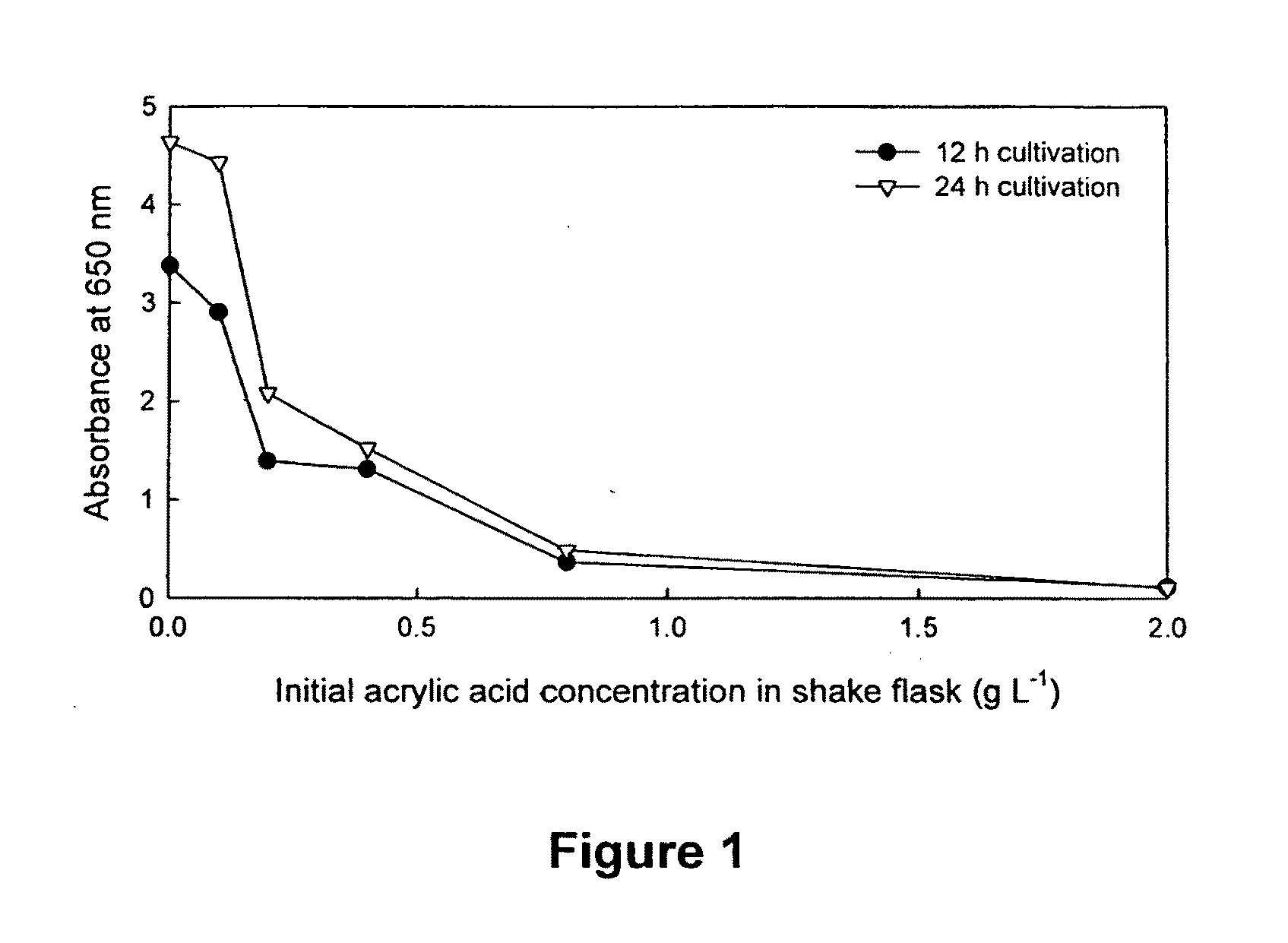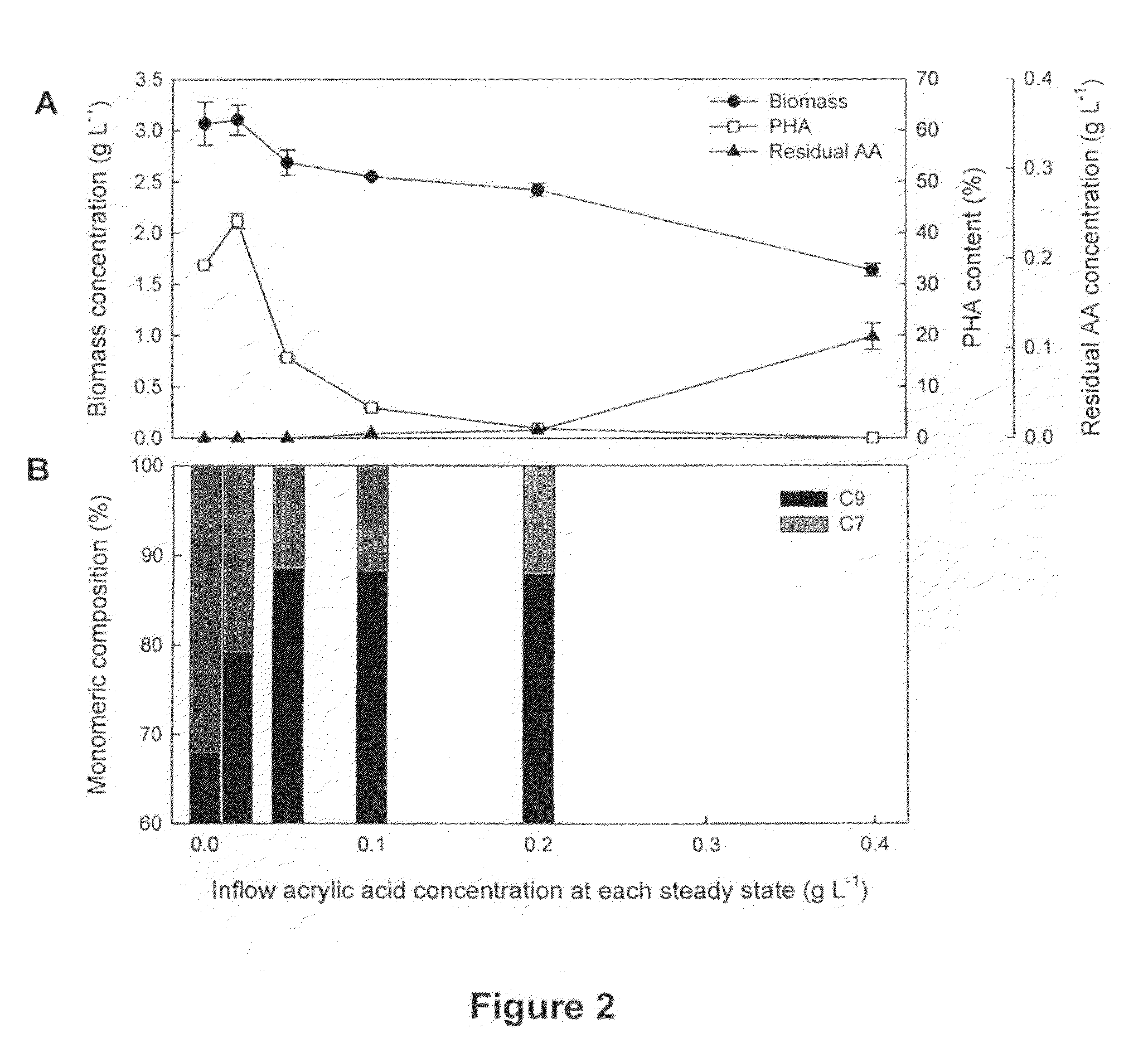Medium Chain Length Polyhydroxyalkanoate Polymer and Method of Making Same
- Summary
- Abstract
- Description
- Claims
- Application Information
AI Technical Summary
Benefits of technology
Problems solved by technology
Method used
Image
Examples
working examples
Materials and Methods
[0110]A basic glucose-only shake flask medium was a 100 mL liquid medium in a 500 mL Erlenmeyer flask. The medium comprised (g L−1): (NH4)2SO4 (4.70), MgSO4.7H2O (0.80), Na2HPO4.7H2O (12.0), KH2PO4 (2.70), glucose (9.0), nutrient broth (1.0).
[0111]Continuous fermentations were carried out in a 1.5 L stirred tank bioreactor (Bioflo IIc, New Brunswick Scientific, N.J., USA) with a working volume of 1.1 L. The fermentor was operated at 28.5±1° C. and the pH was automatically controlled at 6.85±0.05 using 2 N potassium hydroxide solution. The dissolved oxygen was monitored with an Ingold polarographic probe (available from Mettler-Toledo Ingold Inc., Bedford, Mass., USA) and maintained no lower than 30% air saturation with an aeration rate of 0.8 vvm (void volumes per minute) and an agitation speed up to 900 rpm. Nonanoic acid was fed separately at controlled speed by a peristaltic nutrient pump on the bioreactor. All other aqueous medium was mixed and fed together....
example 1
Effect of Acrylic Acid on Cell Growth in the Presence of Glucose as Carbon Source
[0119]The effect of acrylic acid on cell growth was determined using Pseudomonas putida KT2440 (ATCC 47054). Pseudonomas putida KT2440 (ATCC 47054) was maintained on nutrient agar plates at 4° C. before inoculation. The toxicity of a β-oxidation inhibitor, acrylic acid, to the growth of Pseudomonas putida KT2440 was determined by shake flask experiment. The cultivation conditions were 28° C. in a New Brunswick Shaker-Incubator at 200 rpm. The medium used was the basic glucose-only shake flask medium described above, plus appropriate amount of acrylic acid.
[0120]500 mL Erlenmeyer flasks were used with each containing 100 mL of medium. In addition to the basic medium described above, increasing concentrations of acrylic acid (AA) at 0, 0.2, 0.4, 0.8, 2.0 g / L were prepared in each flask. The first set of such flasks was cultured for 12 h and the second set of such flasks was cultured for 24 h. After the sp...
example 2
Preparation of MCL-PHAs with Controlled Composition Prepared in the Presence of a β-Oxidation Inhibitor Using Continuous Fermentation
[0121]MCL-PHAs with controlled composition were produced in continuous fermentation of Pseudomonas putida KT2440 by increasing the concentration of acrylic acid. The inoculum was grown in the basic glucose medium described above. After 18 h of cultivation, 200 mL of such culture was inoculated into a 1.5 L bioreactor with 1.1 L working volume (Bioflo II, New Brunswick Scientific, N.J., USA). The bioreactor was then operated in continuous fermentation mode with a medium dilution rate of 0.25−1. The inflow medium was composed of the following components (per litre): carbon source, nonanoic acid (3.80 g±0.1 g for each steady state); β-oxidation inhibitor, acrylic acid (0, 0.02, 0.05, 0.10, 0.20 g for each steady state); nutrients (NH4)2SO4 (5.02 g); MgSO4.7H2O (1.03 g); Na2HPO4.7H2O (2.24 g); KH2PO4 (0.50 g); and trace element solution (1.40 mL). The trac...
PUM
| Property | Measurement | Unit |
|---|---|---|
| Time | aaaaa | aaaaa |
| Time | aaaaa | aaaaa |
| Time | aaaaa | aaaaa |
Abstract
Description
Claims
Application Information
 Login to View More
Login to View More - R&D
- Intellectual Property
- Life Sciences
- Materials
- Tech Scout
- Unparalleled Data Quality
- Higher Quality Content
- 60% Fewer Hallucinations
Browse by: Latest US Patents, China's latest patents, Technical Efficacy Thesaurus, Application Domain, Technology Topic, Popular Technical Reports.
© 2025 PatSnap. All rights reserved.Legal|Privacy policy|Modern Slavery Act Transparency Statement|Sitemap|About US| Contact US: help@patsnap.com



